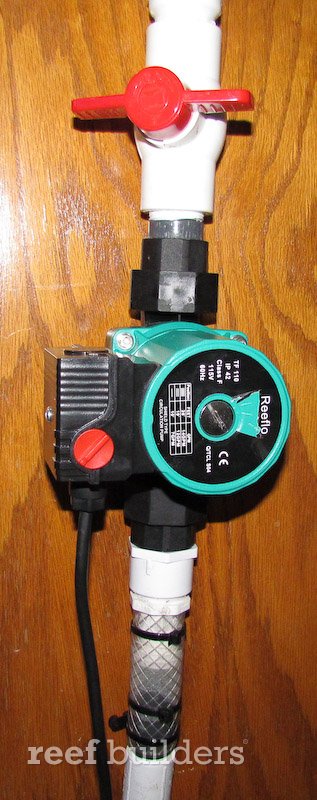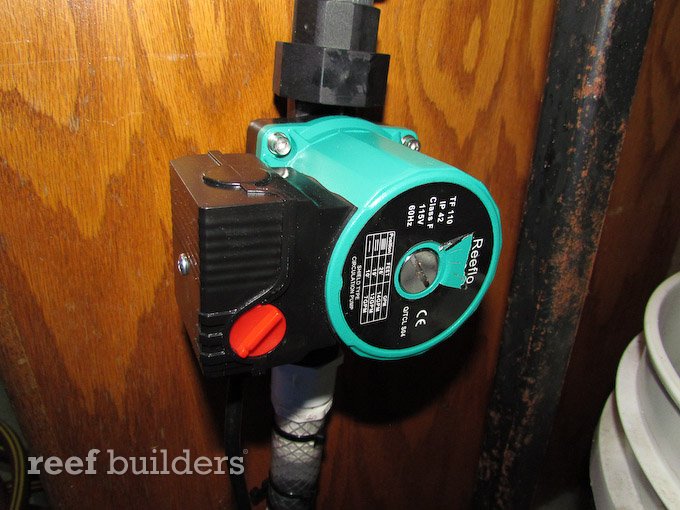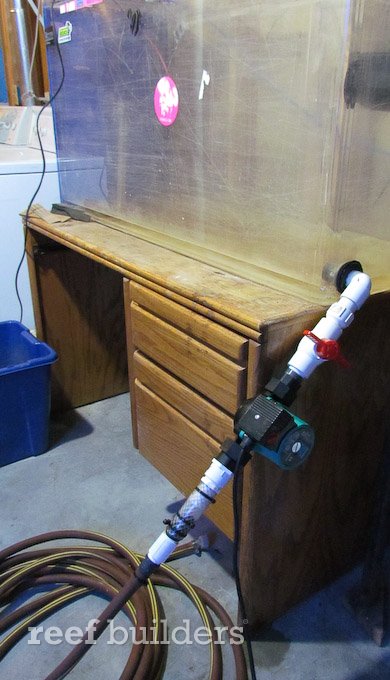When we first spotted Reeflo’s Blowhole at Reefapalooza last year, our first thoughts went to the Blowhole pump being able to empty vats and fill tanks with lots of power in a form factor that works for this application. So when we received a Blowhole from Reeflo to test out, that’s what we did – hooked up the blowhole to a 90 gallon water vat to see how far, how high and how fast it could pump. With far flung tanks spread out on multiple stories of the house, we had the perfect testbed to see what kind of pumping power the Blowhole can muster when coupled with a very long hose and a lot of head pressure to overcome.
Compared to when we first saw it, the Reeflo Blowhole comes equipped with a plastic impeller volute and matching plastic union fittings that make connection and disconnection very easy. The black housing on the side of the Blowhole pump’s body has a dial that can be adjusted to any one of three settings with maximum head pressures of 10, 19 and 26 feet and maximum flow rates of 7, 12 and 14 gallons per minute. In our set up the Blowhole was connected to fifty feet of a one inch hose and pulling directly from a saltwater mixing tank. In a very unscientific and crude way, the pumping capacity of the Blowhole in it’s highest setting was estimated to be about 75 gallons in ten minutes (~450gph) at a height of six feet and 90 gallons in 15 minutes (~360gph) at a height of 16 feet.
Keep in mind that we were pumping through a typical fifty foot garden hose, although it was the reinforced kind that doesn’t collapse very easily. In our application the Blowhole was surprisingly strong and we can think of a number of pumps that would have kept us waiting on the fill up of some big tanks following a particularly large water change. It was a real pleasure to use the Blowhole this way, and the unique orientation of this pump could and will also be used in applications of continuous operation, like on sumps and supply manifolds feeding reactors and skimmers. The fanless design of the Reeflo Blwohole pump ends up being much quieter, but it also adds more heat to the aquarium water, which is perhaps not such a bad thing with so many more reef tanks using heaters these days to make up for the lack of heat from LED lights.
 For more information on this new inline-design water pump see our previous coverage of the Reeflo Blowhole Pump from Reefapalooza last year, and hopefully this pump will hit the market soon to be employed in more compact and quieter reef and fish sump designs.
For more information on this new inline-design water pump see our previous coverage of the Reeflo Blowhole Pump from Reefapalooza last year, and hopefully this pump will hit the market soon to be employed in more compact and quieter reef and fish sump designs.
FTC regulations require that we inform you that we were given this product for review, but our opinion of a product is never affected by how we acquire them.




